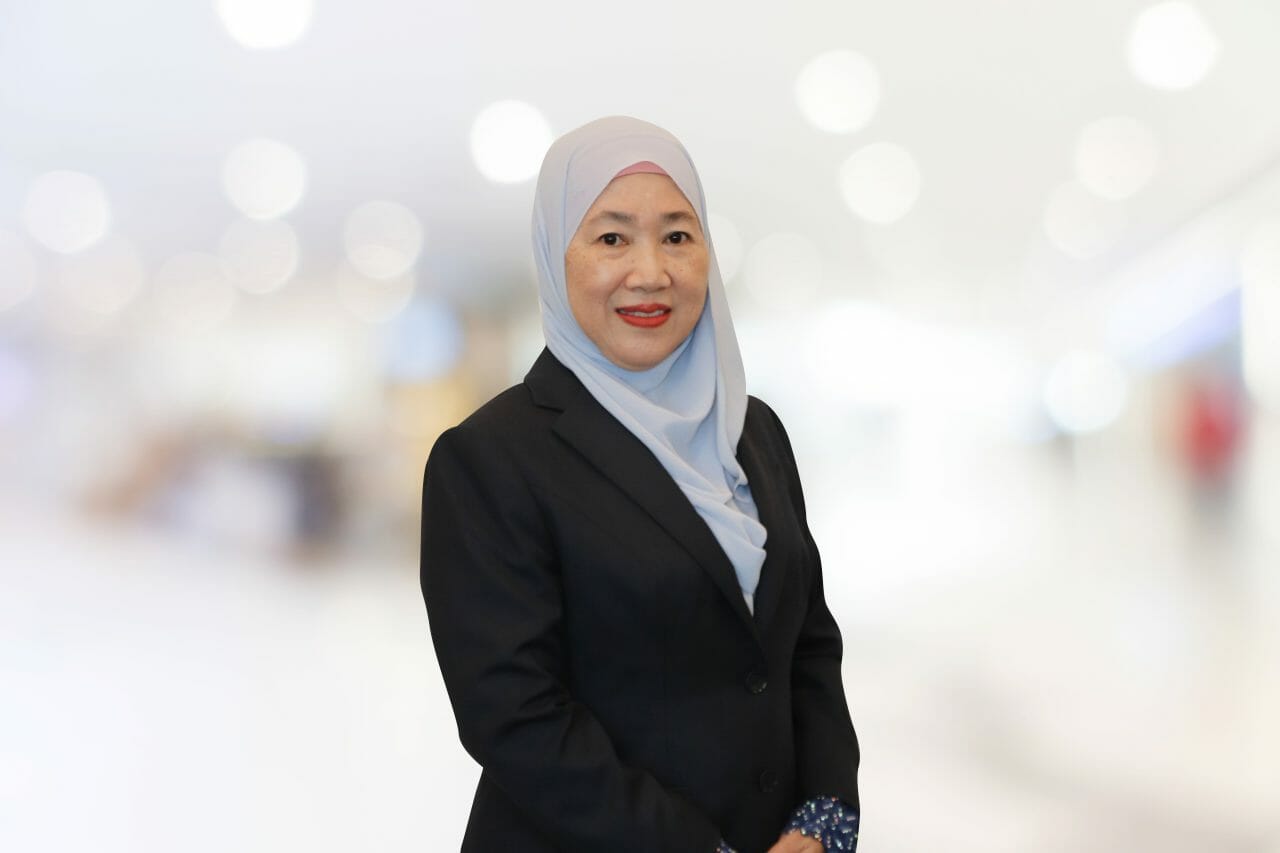Malaysia’s rubber quality is towering amongst the competition perhaps because the country had a head start in the industry being among the first nations in the world to start a rubber plantation in 1896.
However, what got the country recognised was not only for the variety of trees that could grow healthily in the unique soil but also the research and development aspects involved in the industry. Malaysia is among the leading nations in the field of R&D and has been innovating technology in rubber for more than 75 years. In fact, some of the key solutions in rubber technology is from the country, for instance, the seismic rubber bearings dampener used for bridges and buildings to absorb vibration from the earthquake is a proud innovation from our local scientist. Japan is a big importer of these contraptions!
Riding on the heels of this successful milestone is what sets the country’s rubber products apart from the others. Emphasising quality, the number one rubber product export which happens to be medical gloves is also riding on the coattails of the country’s legacy- research and development and quality rubber.
Ensuring this standard is maintained and working tirelessly in elevating the Made in Malaysian Rubber story to every part of the world has been mandated to Malaysian Rubber Council (MRC) by the Ministry of Plantation Industries and Commodities.
Among them is the establishment of the Global Funding for Rubber Innovation (GFRI), for researchers from universities, research institutions and industry players to embark on new technology and innovation that will facilitate the advancement of the rubber industry.
Shedding some light on these initiatives and the role MRC will be playing moving forward, caught up with the busy Chief Executive Officer of Malaysian Rubber Council, Hizwan Ahmad who had just returned from promoting Malaysian rubber industry and products in Dubai.
Before the interview could formally begin, Hizwan was elated to share MRC’s accomplishment which includes impressive opportunities to expand rubber products to the Middle East.
The newly minted CEO was energetic in sharing the role he is embracing as top honcho at MRC. Accustomed to challenges in his previous position, he started the interview proudly declaring “MRC contributes greatly to the coffers of the nation, the demand for high-quality rubber products has been increasing and we are not stopping there.” the statement set the tone for the interview session.
Return of Rubber
In the last 2 decades, the rubber industry is transitioning to the higher value manufactured products with downstream exports contributing to 84.4% of total industry exports (rubber and rubber products) in 2020, as compared to 48.9% in 2010.
The export of rubber and rubber products grew at a CAGR of 18.2% for the last 5 years (2016 – 2020), reaching RM48.5 billion in 2020.
The overall industry export increased tremendously by 46.3%, equivalent to RM71 billion last year, in comparison to RM48.5 billion of the same period in 2020.
So how well is Malaysia performing on the overall industry? MRC shared some statistics on export, according to Hizwan, rubber products export increased 50.6%, or about RM61.7billion in 2021, as compared to almost RM41 billion of the same corresponding period in 2020.
“The Latex goods sector remained the largest contributor at 91.9% of rubber products exports in 2021. Rubber gloves remain the highest contributor with export revenue of almost RM54.8 billion, an increase of approximately 55.4% from the previous year,” he said.
“I have to stress the importance of latex goods to Malaysia and how it had ensured the consistency in delivering the best quality,” the CEO added.
Hizwan said that the United States remains the largest market for Malaysian rubber products with a total export of RM22.9 billion in 2021, an increase of 76.5% as compared to the same period in 2020.
He said other key markets have also recorded an encouraging increase in export growth on a year-on-year (YoY) basis, namely Canada by 70.1%, Germany (57.9%), Netherlands (57%), Brazil (52.8%), and Japan (40.5%).
Hizwan said that the Malaysian medical gloves made up a lion’s share of 61.3% of the latex goods sector, which is roughly equivalent to RM24.6 billion. “Now that as most countries are ramping up their vaccination programme, large-scale vaccine deployment is increasing the need for medical gloves such as examination gloves,” he said.
Beyond healthcare
The spectacular success of the industry did not happen by accident but through the various initiatives of the Malaysian Rubber Board (MRB) another agency under the MPIC, notably on the diligent development, a better and newer species of the rubber for producing the “best latex and the best trees” which also makes Malaysian made gloves not only superior but among the best in the world.
This is achieved, with the enhancement and empowerment of the country’s historical research and development in rubber, global marketing & promotional efforts by MRC which constantly aims to increase usage of rubber products in fields beyond healthcare. The work doesn’t stop here, despite Malaysian being the world’s number one in glove production the competition is not very far, Thailand, Vietnam, and China are serious contenders eyeing a piece of the pie. On this Hizwan states “We can’t be complacent with whatever we have now as the neighbouring competitors are catching up.”
Made In Malaysia
Some of the initiatives that MRC is taking to increase the export of rubber products include participating in international promotional activities and organising marketing activities like international working visits, ministerial missions, and related conferences.
These marketing and promotional activities are done with the core mission of establishing branding awareness in the international market, which is to amplify the high quality of made-in-Malaysia rubber products.
In efforts to penetrate untapped international markets, MRC launched the Global Branding Campaign 2022 which consists of various online and offline media targeting both domestic and international audiences such as the USA, Latin America, Europe, China, India, Middle East as well as Africa.
The initiative aims to ensure made-in-Malaysia rubber products brand presence and impactful advertising for our rubber products globally.
“GBC will provide additional focus to rubber products, like food handling gloves, tyres, rubber medical devices, PPE gloves, rubber automotive components, condoms, latex foams, engineered rubber products like the seismic rubber bearings on top of our starred-product, medical rubber gloves” he added.
MRC has also kick-started activities on social media with the hashtag #NoOneKnowsRubberLikeMalaysiaDoes to increase online engagement and presence.
He said that it was also pushing industry players to move up the global value chain by introducing new channels and ideologies such as through collaborations with International Development Organisations (IDOs).
“The idea is to better prepare the industry players for the new post-pandemic economy and help them to grow continually. Our role here is to identify and evaluate prospective companies and facilitate capacity building through training, coaching, and networking using specifically structured IDO partnership programmes,” he said
Hizwan added that MRC is establishing Global Funding for Rubber Innovation (GFRI) to encourage the generation of ideas, innovations, and inventions for rubber products and technologies with good commercial viability within the rubber industry.
For instance, for the upstream sector, he said automated rubber tapping could be the way forward to increase domestic rubber productivity. MRC shall procure a way to assist in its role of linking the downstream sector with that of midstream and upstream for the overall benefit of the domestic rubber and rubber products supply chain.
Industry Challenges
There will always be threats and challenges, the key is to overcome them and find solutions.
Addressing the elephant in the room on issues relating to labour abuse, Hizwan said MRC is working together with MPIC in addressing negative issues related to these allegations, efforts he said have been made to comply to Act 446, which provides for minimum standards of housing and accommodation for workers. The Ministry is also looking to engage with relevant international authorities to counteract the foreign labour allegations.
Other headwinds facing the industry include the misconception on allergy caused by using natural rubber products, which are predominantly used in gloves and have raised some issues but the industry together with MRC and research agencies have overcome this by introducing low protein gloves.
On top of that, he said that MRC also initiates educational seminars to educate consumers on the importance of using high-quality rubber gloves. This is to address the problem of product competition posed by cheap plastic gloves.
“We will be putting increased focus on promotional activities of prioritised products namely gloves, rubber medical devices (RMD) other than gloves, engineered rubber products (ERP), latex mattresses, rubber automotive components (RAC), and precured treads. MRC will also focus on midstream products such as green rubber such as Ekoprena and Pureprena,” he said.
The formation of the Sustainability Unit shows the commitment MRC is placing in environmental and green initiatives. The unit will also conduct sustainability programmes that will benefit both the rubber industry and Malaysians in general. Playing an advisory role for companies embarking on their EESG journey.
Addressing Social Compliance Issues
“Foreign workers are essential in ensuring that Malaysia’s manufacturing industries continue to thrive. MRC has encouraged the industry players to ensure social compliance and address the issues related to sustainability,” said Dr. Daroyah Alwi, Chairman of MRC.
She added that SMETA (Sedex Members Ethical Trade Audit), the most widely used social audit in the world, is the standard that businesses can use to assess a supplier’s working conditions, across the areas of labour, health and safety, environment and business ethics.
MRC has also provided incentives for the industry to encourage them to comply with the relevant standard such as SBIM22 – Social Compliance Standard, offered for a three-year period from 2019 to 2022.
The incentive provides full reimbursement fees for the items related to social compliance audits up to a maximum of RM50, 000 per company. Meanwhile another incentive, SBIM23 – Awareness Material for Social Compliance provides 50% of expenditure to produce materials related to social compliance subject to a maximum claim of RM15, 000 per company to be utilised between 2020 to 2022.
The Chairman however does highlight that more can be done to further improve social compliance issues. One area she points out is awareness; to better increase awareness amongst rubber industry players in social compliance and International Labour Organisation (ILO) indicators of forced labour.
Currently, MPIC through MRC is actively organising training and seminars to encourage industry players to embrace social compliance. She also encourages regular engagement between MPIC or MoHR with the foreign workers via town hall sessions.
“To encourage industry players to allow their foreign workers to appoint a representative for the engagement sessions and any communication with the ministries,” she added.
Dr. Daroyah also further sheds light on the grievance mechanism, an ideal solution to deal with forced labour complaints. This will serve as a formal and proper platform within the industry for the foreign workers to channel their complaints, and for the industry to take necessary action to address the complaints.
The council also acts as a platform for rubber industry players to connect the dots from manufacturers to end-users. MRC has been active in organising dialogues with industry players pertaining to various issues, from market trends to updates on regulations and markets.
This also includes handholding sessions for industry players to match them with suitable incentives and funds to further expand their rubber businesses.
Noting that challenges will always be prevalent, MRC has been proactive in this regard, constantly keeping abreast of the market and scientific findings.
Apart from that, the agency provides incentives, R&D grants, and researcher-industry collaboration opportunities in areas of automation and green technologies, to future-proof the industry.
Future For the Industry
The outlook for Malaysian rubber and rubber product looks very optimistic, export for the industry in expected to grow at a positive rate between 5% – 6% in 2022, with a possibility of a new high at around RM76 billion in value. The CEO and chairman of MRC are both looking forward to what 2022 has in store for the Malaysian rubber sector.
Attributing to the growth is mainly on the continuous demand for rubber gloves, since the pandemic started in early 2020, the world continues to observe stricter global healthcare regulations and increasing hygiene awareness, hence boosting production in the rubber and chemical-related segments.
Hizwan said that the demand for rubber products such as gloves, catheters, and others continues to be high, especially for made-in-Malaysia rubber gloves. However, as the pandemic subsides, the industry is expecting to see the Average Selling Price (ASP) return to the pre-pandemic level possibly by the second half of 2022.
But this could be offset by increased demand in other rubber products such as rubber automotive components, engineering applications, consumer products, and the emergence of rubberwood for biomass purposes are predicted to increase.
“Firm rubber prices are projected in 2022, together with the increase in the world demand for natural rubber will help stimulate our domestic rubber production.
Prime Minister Dato Seri Ismail Sabri recently launched the Kedah Rubber City to catalyse the industry even further by inviting industry players domestically and from the region to collaborate in advancing the sector. The development of the East Coast Latex Corridor and adoption of digitalisation will boost the industry further
The Malaysian Rubber industry is poised for a revolution, harking back to the glory days when the nation dominated the world with its latex production. This time around it will be the Made in Malaysia brand guided by MRC, that will once again raise the profile of this proud national commodity.










